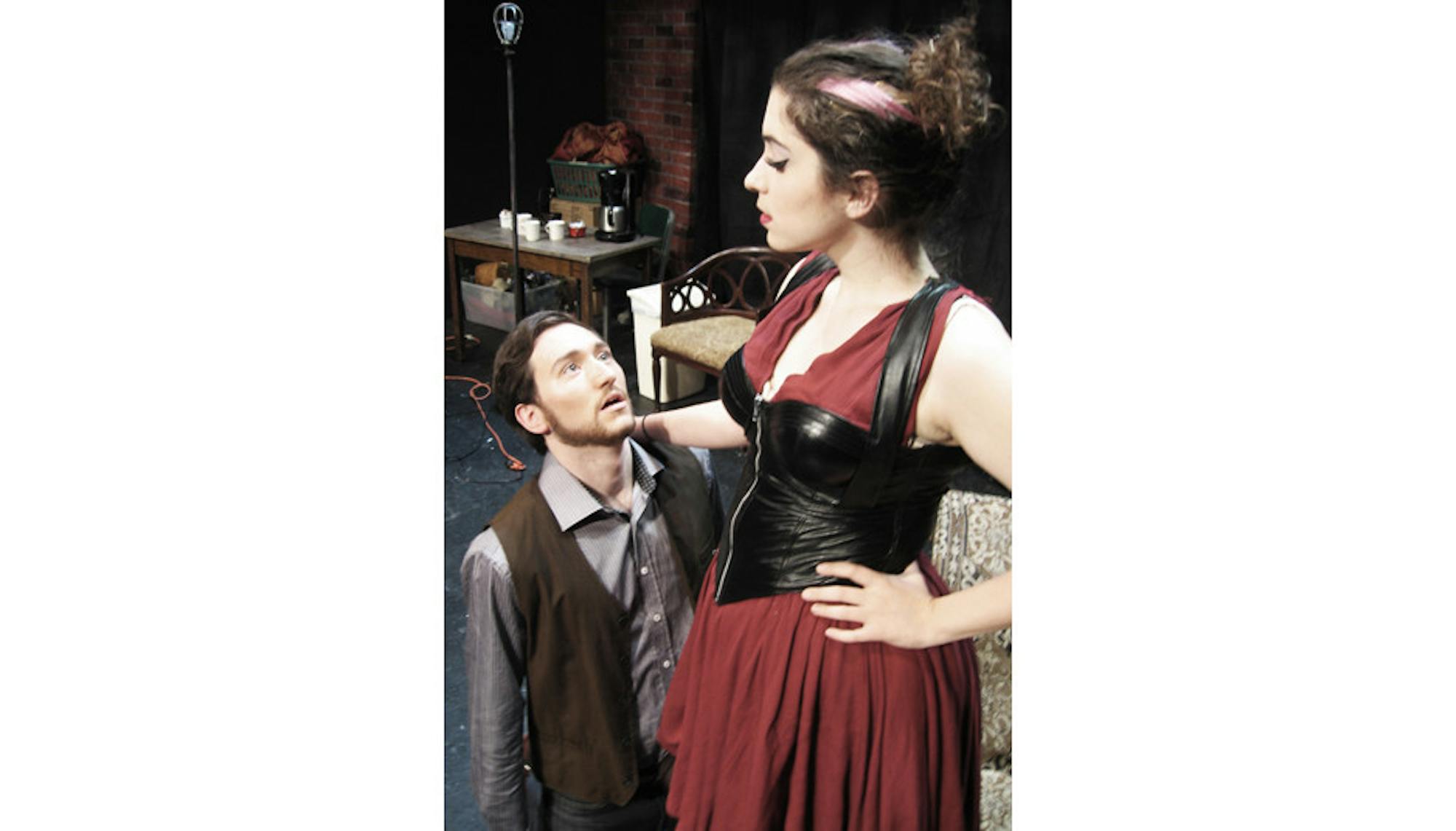Written by David Ives, "Venus in Fur" premiered on Broadway in 2011 and was well received by critics, earning a Tony nomination for Best Play. Containing a play within a play, the storyline involves a blending of realities as actress Vanda Jordan auditions for the role of Wanda von Dunayev in writer/director Thomas Novachek’s production of Venus in Furs. The fictional play is based upon the real Leopold von Sacher-Masoch novel, from which the term “masochism” was coined. As a thunderstorm rages outside, a different sort of storm brews inside the off-off-Broadway studio. After Vanda ropes Thomas into a reading of his script in which he reads for the lead Sevirin von Kushemski, they engage in a power play, exchanging threats, witticisms and sexually-charged barbs. Throughout the show, Vanda prods Thomas, exposing his questionable motivations and unrecognized desires both to him and the audience. But as Thomas is revealed to the audience, the mystery of Vanda’s identity grows increasingly murky, and the viewer is left with burning questions about her. How much of who she claims to be at the beginning of the show can be believed? Is she a struggling actress? A private investigator? An avatar of Aphrodite/Venus, prepared to exact revenge on a hapless playwright?
Tufts University's Department of Drama and Dance’s production of "Venus in Fur," its final major production of the 2015 - 2016 season, is directed by Sheriden Thomas.The show stars seniors Tessa Barlow-Oschorn and Tyler Beardsley as Vanda and Thomas respectively.
Tessa Barlow-Oschorn dominated the stage, effortlessly switching and blurring the lines between Vanda Jordan and Wanda von Dunayev. From her expletive-filled entrance to the dramatic climax, she commanded the audience’s attention. Like Vanda, who in the play asserts that she is “like, made for” the part of von Dunayev, Barlow-Oschorn appeared to be made for this role. Her vocal inflections and authoritative swagger as both von Dunayev and Jordan were captivating and demonstrative of confidence in the role.
Initially, Tyler Beardsley appeared to be more comfortable as Sevirin (ironically, a role that Thomas was bullied into). However, as more dimension of Thomas is revealed, and as his chemistry with Vanda becomes more electric, Beardsley’s presence grew on stage. Indeed, he was at his strongest in some of the final scenes, when Thomas is at his most vulnerable.
A crash of lighting and howling winds welcomes the audience into the world of "Venus in Fur," establishing the setting and evoking an almost fantastical eeriness — even foreshadowing one of Vanda’s later lines about a “little female Frankenstein monster.” Sound, designed by Tufts graduate Grace Oberhofer, helps remind the viewer of the world beyond the studio and enhanced the magical elements of the show without overwhelming the dialogue.
Tufts junior Stacey Fair’s set was simple yet effective; its haphazard pile of old set dressings and multitude of coffee mugs conveys a stereotypical studio working environment.
After the show on April 9, a talk back with audience members and Tufts professors Dr. Barbara Wallace Grossman, Dr. Nancy Bauer and Dr. Jennifer Eyl took place, with Tufts Drama and Dance graduate student Yizhou Huang moderating. Applying their areas of study (drama, philosophy and religion respectively) to the play, the professors discussed gender dynamics within show business, consent’s role in relationships and 19th century romanticism of classical mythology. The audience was then asked for input on what they believed the message of the play to be, as all agreed it was complex. One idea that earned applause was a line said by Vanda in the show — “Don’t f*ck with the goddess.”
“I should get that on a t-shirt,” laughed one audience member.
Tufts Drama and Dance production of 'Venus in Fur' impresses

The Tufts Drama Department's production of "Venus in Fur."
Summary
4 Stars





